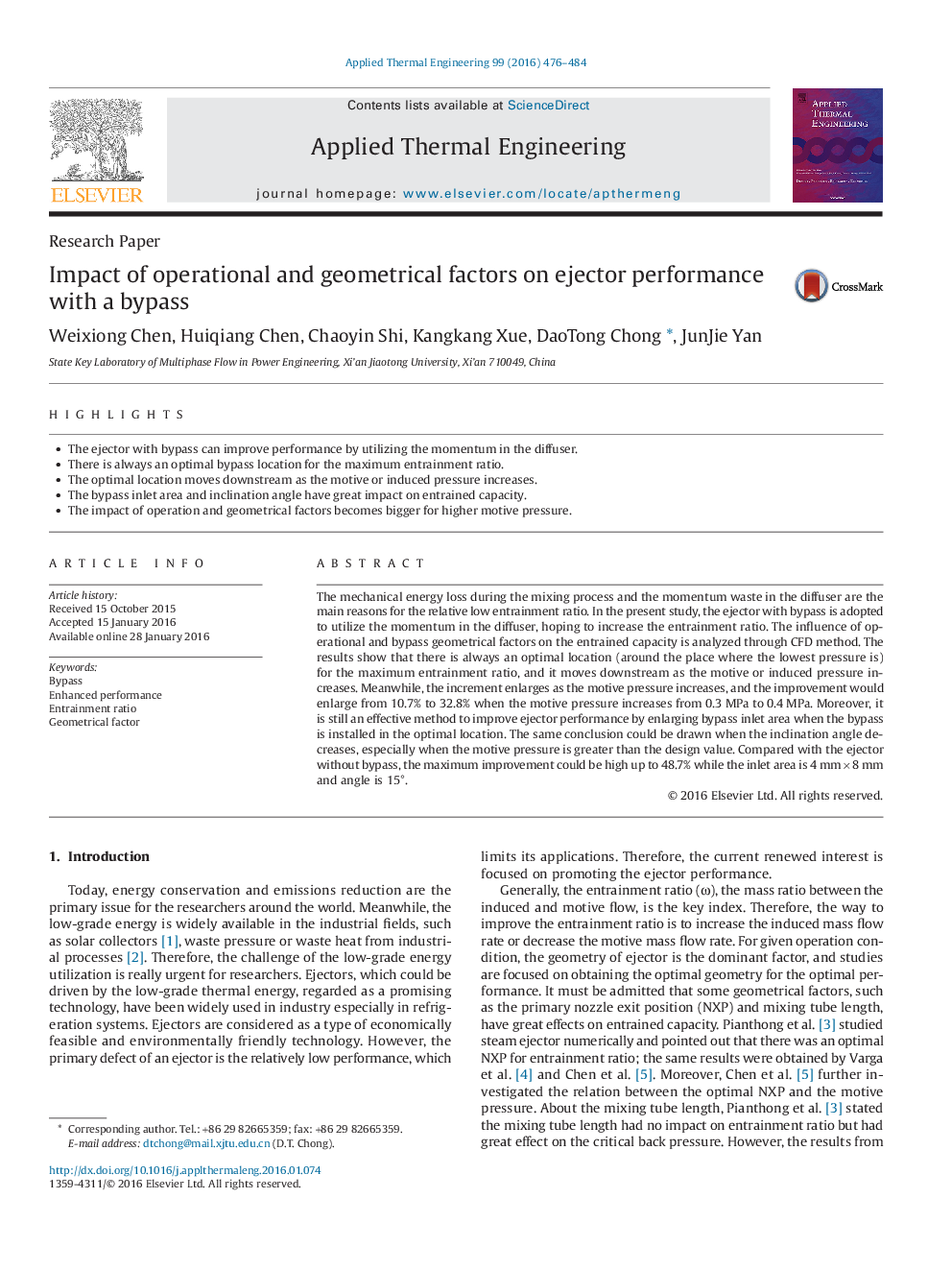| Article ID | Journal | Published Year | Pages | File Type |
|---|---|---|---|---|
| 644701 | Applied Thermal Engineering | 2016 | 9 Pages |
•The ejector with bypass can improve performance by utilizing the momentum in the diffuser.•There is always an optimal bypass location for the maximum entrainment ratio.•The optimal location moves downstream as the motive or induced pressure increases.•The bypass inlet area and inclination angle have great impact on entrained capacity.•The impact of operation and geometrical factors becomes bigger for higher motive pressure.
The mechanical energy loss during the mixing process and the momentum waste in the diffuser are the main reasons for the relative low entrainment ratio. In the present study, the ejector with bypass is adopted to utilize the momentum in the diffuser, hoping to increase the entrainment ratio. The influence of operational and bypass geometrical factors on the entrained capacity is analyzed through CFD method. The results show that there is always an optimal location (around the place where the lowest pressure is) for the maximum entrainment ratio, and it moves downstream as the motive or induced pressure increases. Meanwhile, the increment enlarges as the motive pressure increases, and the improvement would enlarge from 10.7% to 32.8% when the motive pressure increases from 0.3 MPa to 0.4 MPa. Moreover, it is still an effective method to improve ejector performance by enlarging bypass inlet area when the bypass is installed in the optimal location. The same conclusion could be drawn when the inclination angle decreases, especially when the motive pressure is greater than the design value. Compared with the ejector without bypass, the maximum improvement could be high up to 48.7% while the inlet area is 4 mm × 8 mm and angle is 15°.
